
How to Play: Tongue Motions
Any movement of the tongue can be used to manipulate the sound of the didjeridu tonally or rhythmically. Many non-Yolŋu players use what is called double or triple tonguing in brass instrument terminology for flashy rhythms. This can be expressed in print as “taka taka” or “takata takata.” Yolŋu yidaki playing relies on a very strong and agile tongue trained in motions and positions that are used in Yolŋu languages, but will be foreign to most readers of this website. You can begin to understand the very basics of Yolŋu yidaki with only two of these tongue positions, and the motion in between them. Below are images and excerpts from the CD Hard Tongue Didgeridoo as examples.
The first position is called the “retroflexed” position, which means the tongue is curled back so that the bottom of the tip is pushing against the gum ridge. The second, “interdental,” position involves the tongue thrusting forward so that the tip of the tongue is touching the tips of the top and bottom teeth, perhaps edging on the backs a bit, and the blade of the tongue is pushing against the gum ridge.
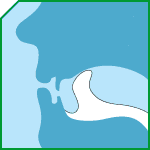
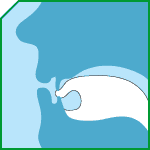
The first basic motion is taught by Yolŋu as “dith-dhu” or sometimes, as you will hear on Djalu’s teaching CD’s, just “dith,” leaving the second bit implied. For the “dith,” you start from the retroflexed position and thrust your tongue, uncurling it, to the interdental position. The tongue whips from curled back to hitting the back of the tips of the teeth. This is accompanied by a pulse of air from the belly. With the right pressure in the lips, mouth and throat, this technique also produces a very brief hint at the trumpeted note we will discuss later. After arriving at the teeth, the tongue pushes back away from the teeth to a neutral position on the “dhu.”
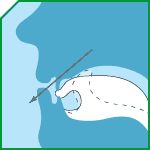
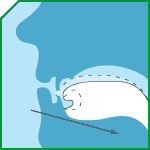
The other motion is pulling the tongue back from the interdental position to the retroflexed position, flicking the gum ridge along the way, which would be spelled as ‘rr’ in Yolŋu languages. Yolŋu indicate this yidaki technique with “dhirrl” or a closely related version, “dhirrk.” This motion is accompanied by a strong pulse of air and often a breath in to refill the lungs.
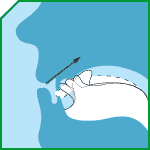
With this small bit of information, you can begin to understand Yolŋu yidaki playing much better. Below is a simple three pulse rhythm using just these techniques – one forward tongue thrust and release followed by drawing it back twice – first performed as “mouth sounds” which are used to teach rhythms, and then played on a yidaki.
dith-dhu dhirrl dhirrl dith-dhu dhirrl dhirrl
dith-dhu dhirrl dhirrl dith-dhu dhirrl dhirrl
This rhythm can be complicated by improvising on the two techniques or adding the horn tone (described later), as shown in these sound clips.
dith-dhu dhirrl dhirrl dith-dhu dhirrl dith-dhu
dith-dhu dhirrl dhirrl dith-dhu dhirrl dhirrl
dup-pu dhirrl dhirrl dup-pu dhirrl dup-pu
dup-pu dhirrl dhirrl dup-pu dhirrl dhirrl
With this simple introduction, hopefully you can see how Yolŋu yidaki playing is constructed. There are more techniques and subtle variations, but just understanding these simple building blocks will get you a long way.







